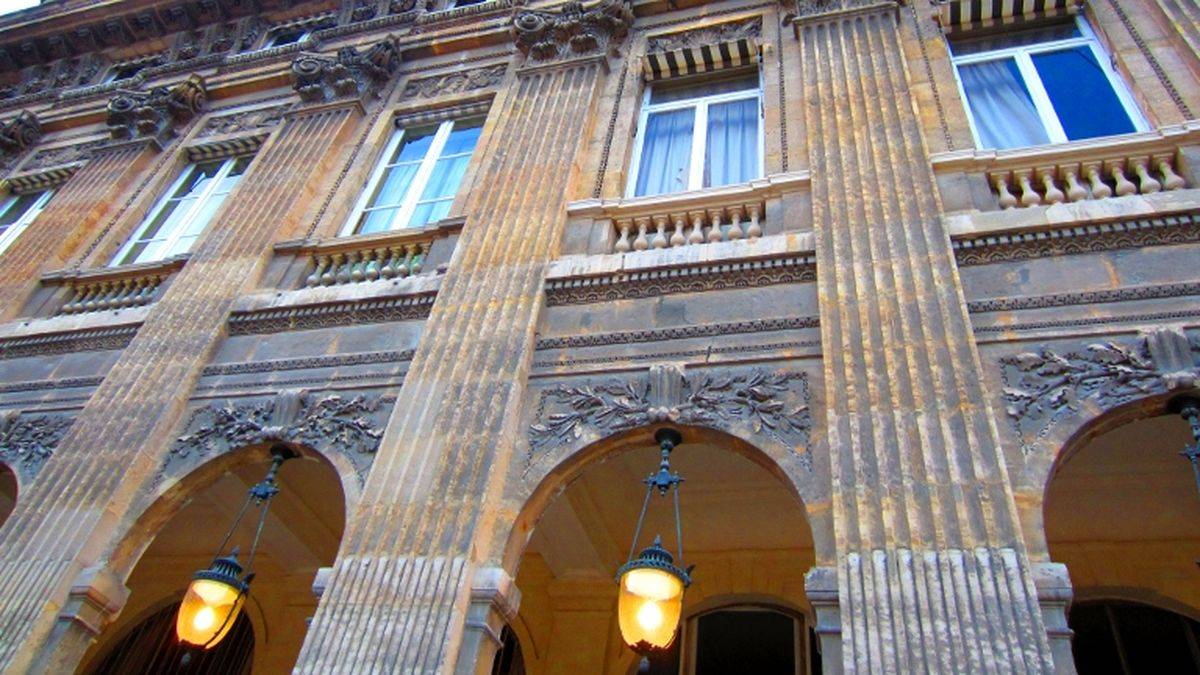 Detail | ©Anecdotrip.com / CC-BY-NC-SA
Detail | ©Anecdotrip.com / CC-BY-NC-SAOne cardinal, a queen
1626. Cardinal de Richelieu owned the Armagnac and Rambouillet town houses. Not for him, not at all!
To destroy them and re-raise the luxurious Cardinal Palace, created by architect Le Mercier, with gardens laid out by Desgots: the biggest garden at that time in the city!
When the cardinal died, queen Ann of Austria moved here with her children. The place became... the Palais-Royal ("Royal Palace").
This one fell to her sister-in-law Henriette, then to Henriette’s daughter, who had just married Monsieur, Louis XIV’s brother. Bourbon family kept the palace until the 19th century!
In the 18th century, the place was transformed... They extended the garden and laid out vast chestnut trees alleys.
Palais royal and pretty ladies!
But in 1781, a fire destroyed the theatre located near the palace. The future Philippe-Egalité decided to raise galleries around the garden, with bookshops and shops.
Architect Victor Louis laid out this garden surrounded by columns, between 1781 and 1784.
Oooh, Parisians didn’t like the place, at once! They grumbled, grumbled... and finally the place became the liveliest garden in Paris!
A 1784 description said:
Les femmes viennent y respirer le frais et jouir dans ce jardin du plaisir de voir et surtout le plaisir d'être vues. Des doubles rangs de chaises placées le long d'allées spacieuses suffisent à peine pour recevoir cette foule de femmes presque toutes jolies. Les plus belles et élégantes se promènent au milieu des allées [...] Les feux de 184 réverbères suspendus aux 120 arcades qui éclairent les cafés, les restaurants et les boutiques, répandent sur cette promenade une lumière douce.
"Women came here to breathe fresh air and enjoy this nice garden: they wanted to see others and to be seen. We found chairs put along the vast alleys... so vast, but they couldn't welcome all those beautiful ladies. The most elegant of them strolled in middle of the alley... 184 street lamps hanging to 120 archways lighted up cafés, restaurants and shops with a soft glow..."
During and after the Revolution, they transformed the palace into a dance hall. In 1805, we found about 20 cafés (café du Caveau, café Borel, café des Mille Colonnes), 11 pawnshops, jewellers, perukes sellers...
People had fun, here. Besides, policemen were not allowed to come here, because it was a Royal estate! So, the famous “nymphs” of the Palais Royal appeared, strolling at night in the galleries with their plunging necklines...
When Louis Philip moved here in 1814, enough with great fun! He re-raised galleries, expelled nymphs from the garden and closed sleazy playrooms.
Little by little, people abandoned the place... Burnt during the Commune war, the Palace was restored.
